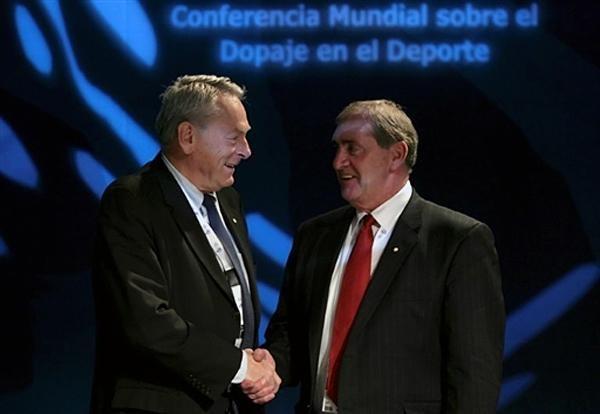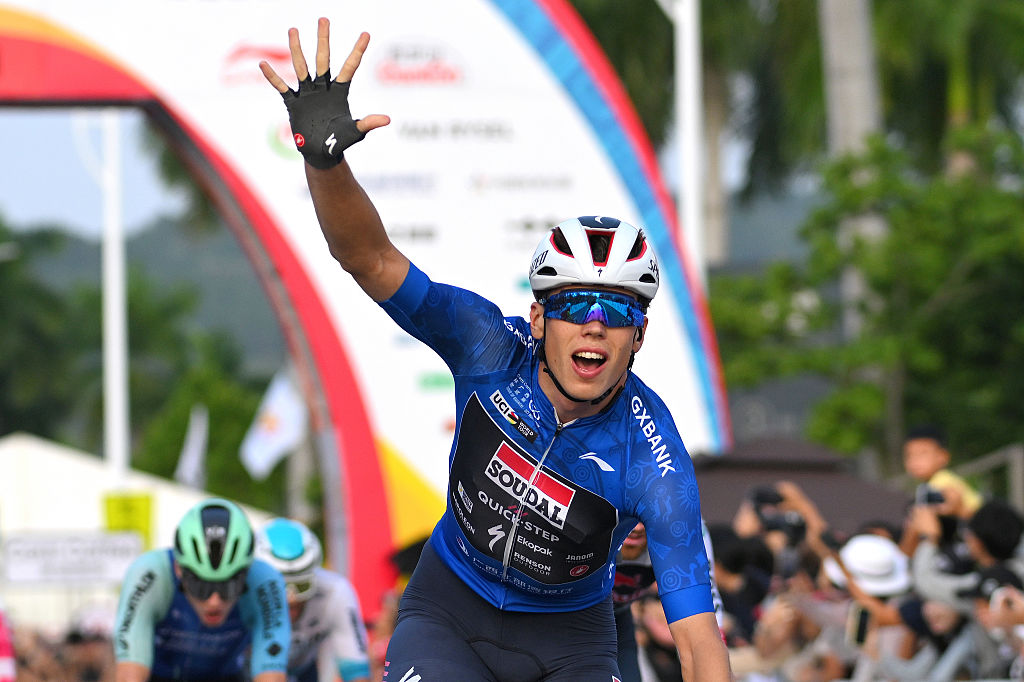Important changes made to the World Anti-Doping Code
Salbutamol to be allowed in higher doses

The World Anti-Doping Agency has made some changes to its prohibited list, effective January 1, 2011. UK Anti-Doping has noted some of the additions and deletions, most notably with changes being made to the legal usage amount of the asthma medication Salbutamol, for which Alessandro Petacchi was suspended in 2008.
It will be forbidden to use any substances which are still in pre-clinical or clinical development, and which have thus not yet been approved for human therapeutic use. In addition, it is not allowed to use demospressin, a synthetic hormone which reduces urine production.
Methylhexaneamine – a substance increasingly found in supplements moves from a non-specified to a specified substance which, whilst still prohibited, carries a genuine possibility of inadvertently entering the system. In October of this year it was revealed that former Caisse d’Epargne rider Rui Costa and his brother Mario had tested positive for the substance.
The new classification still requires athletes to prove that they did not intend to enhance performance "to the satisfaction of the results management authority" in order to receive a reduced sanction.
The following were taken off of the probhitied list: glucocorticosteroids by inhalation or administered by localised injection, as well as platelet-derived preparations, and salmeterol.
Changes were also made concerning the use of salbutamol. It is allowed in limited usage, but not above a maximum of 1600 micrograms over 24 hours.
That is the medication for which Alessandro Petacchi tested positive in 2007. During the Giro d'Italia, doping controls showed a finding of 1352 micrograms, with the limit at the time being only 1000 mg.
The latest race content, interviews, features, reviews and expert buying guides, direct to your inbox!
The new WADA code in full
The official text of the Prohibited List shall be maintained by WADA and shall be published in English and French. In the event of any conflict between the English and French versions, the English version shall prevail.
This List shall come into effect on 1 January 2011The 2011 Prohibited List 18 September 2010 2
THE 2011 PROHIBITED LIST WORLD ANTI-DOPING CODE
Valid 1 January 2011
All Prohibited Substances shall be considered as “Specified Substances” except Substances in classes S1, S2.1 to S2.5, S.4.4 and S6.a, and Prohibited Methods M1, M2 and M3.
SUBSTANCES AND METHODS PROHIBITED AT ALL TIMES (IN- AND OUT-OF-COMPETITION)
S0. NON-APPROVED SUBSTANCES
Any pharmacological substance which is not addressed by any of the subsequent sections of the List and with no current approval by any governmental regulatory health authority for human therapeutic use (i.e. drugs under pre-clinical or clinical development or discontinued) is prohibited at all times.
PROHIBITED SUBSTANCES
S1. ANABOLIC AGENTS
Anabolic agents are prohibited.
5α-androstane-3α,17α-diol; 5α-androstane-3α,17β-diol; 5α-androstane-3β,17α-diol; 5α-androstane-3β,17β-diol; androst-4-ene-3α,17α-diol; androst-4-ene-3α,17β-diol; androst-4-ene-3β,17α-diol; androst-5-ene-3α,17α-diol; androst-5-ene-3α,17β-diol; androst-5-ene-3β,17α-diol; 4-androstenediol (androst-4-ene-3β,17β-diol); 5-androstenedione (androst-5-ene-3,17-dione); epi-dihydrotestosterone; epitestosterone; 3α-hydroxy-5α-androstan-17-one; 3β-hydroxy-5α-androstan-17-one; 19-norandrosterone; 19-noretiocholanolone.
2. Chorionic Gonadotrophin (CG) and Luteinizing Hormone (LH) in males;
3. Insulins;
4. Corticotrophins;
5. Growth Hormone (GH), Insulin-like Growth Factor-1 (IGF-1), Fibroblast Growth Factors (FGFs), Hepatocyte Growth Factor (HGF), Mechano Growth Factors (MGFs), Platelet-Derived Growth Factor (PDGF), Vascular-Endothelial Growth Factor (VEGF) as well as any other growth factor affecting muscle, tendon or ligament protein synthesis/degradation, vascularisation, energy utilization, regenerative capacity or fibre type switching;
and other substances with similar chemical structure or similar biological effect(s).
2. Selective estrogen receptor modulators (SERMs) including, but not limited to: raloxifene, tamoxifen, toremifene.
3. Other anti-estrogenic substances including, but not limited to: clomiphene, cyclofenil, fulvestrant.
4. Agents modifying myostatin function(s) including, but not limited, to: myostatin inhibitors.
S5. DIURETICS AND OTHER MASKING AGENTS
Masking agents are prohibited. They include:
2. Artificially enhancing the uptake, transport or delivery of oxygen, including, but not limited to, perfluorochemicals, efaproxiral (RSR13) and modified haemoglobin products (e.g. haemoglobin-based blood substitutes, microencapsulated haemoglobin products), excluding supplemental oxygen.
M2. CHEMICAL AND PHYSICAL MANIPULATION
The following is prohibited:
SUBSTANCES PROHIBITED IN PARTICULAR SPORTS
P1. ALCOHOL
Alcohol (ethanol) is prohibited In-Competition only, in the following sports. Detection will be conducted by analysis of breath and/or blood. The doping violation threshold (haematological values) is 0.10 g/L.
P2. BETA-BLOCKERS
Unless otherwise specified, beta-blockers are prohibited In-Competition only, in the following sports.
• Aeronautic (FAI)
• Archery (FITA) (also prohibited Out-of-Competition)
• Automobile (FIA)
• Billiards and Snooker (WCBS)
• Bobsleigh and Skeleton (FIBT)
• Boules (CMSB)
• Bridge (FMB)
• Curling (WCF)
• Darts (WDF)
• Golf (IGF)
• Motorcycling (FIM)
• Modern Pentathlon (UIPM) for disciplines involving shooting
• Ninepin and Tenpin Bowling (FIQ)
• Powerboating (UIM)
• Sailing (ISAF) for match race helms only
• Shooting (ISSF, IPC) (also prohibited Out-of-Competition)
• Skiing/Snowboarding (FIS) in ski jumping, freestyle aerials/halfpipe and snowboard halfpipe/big air
• Wrestling (FILA)
Beta-blockers include, but are not limited to, the following:
Acebutolol, alprenolol, atenolol, betaxolol, bisoprolol, bunolol, carteolol, carvedilol, celiprolol, esmolol, labetalol, levobunolol, metipranolol, metoprolol, nadolol, oxprenolol, pindolol, propranolol, sotalol, timolol.

